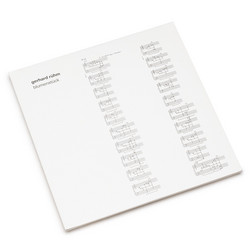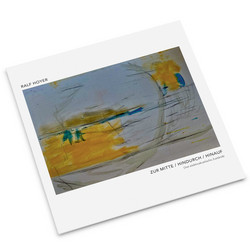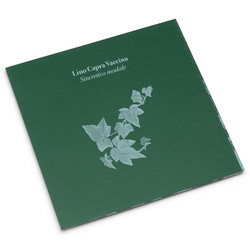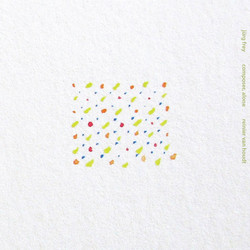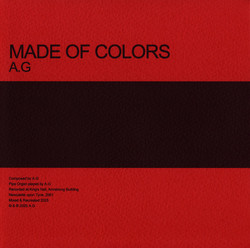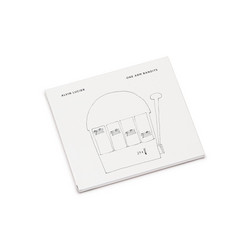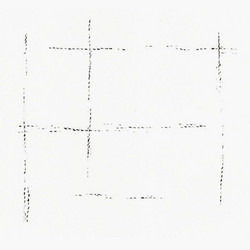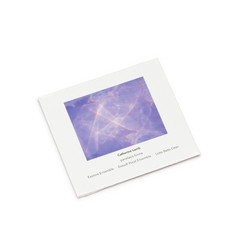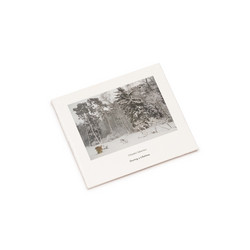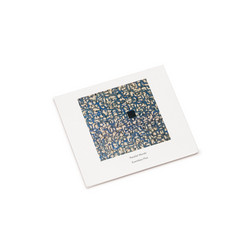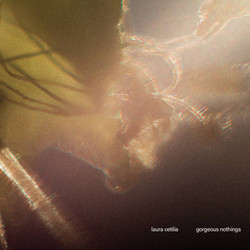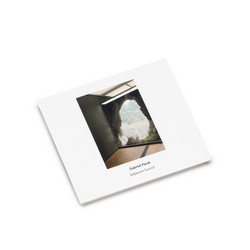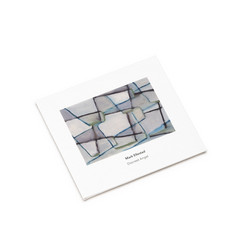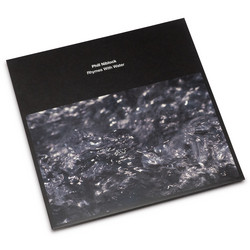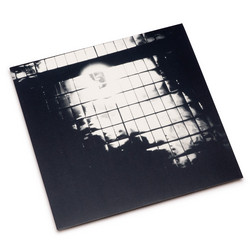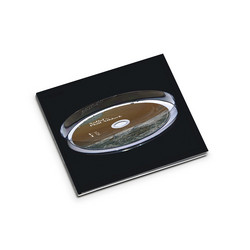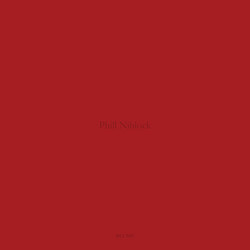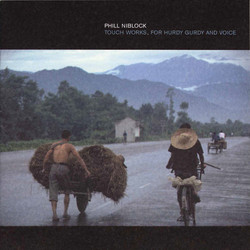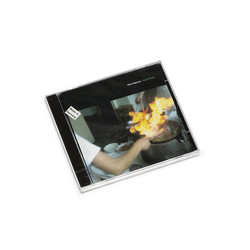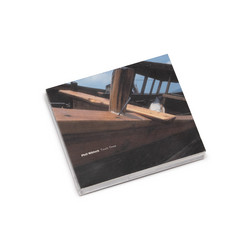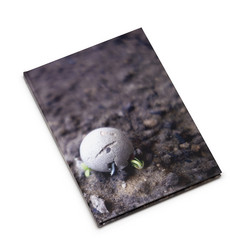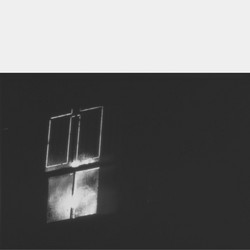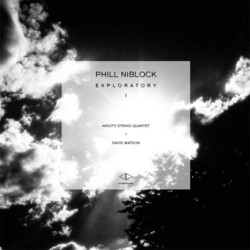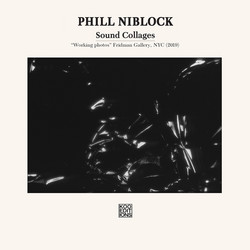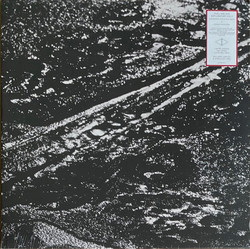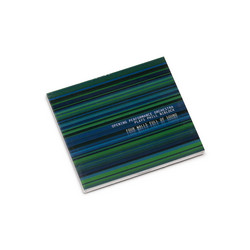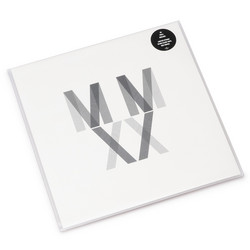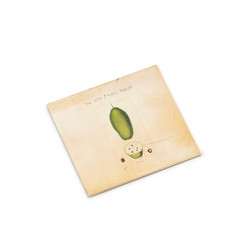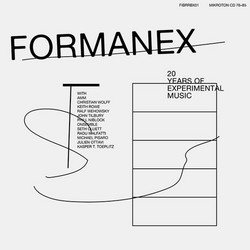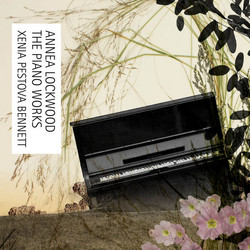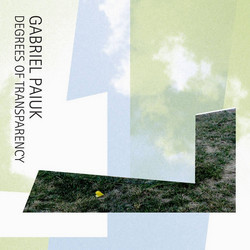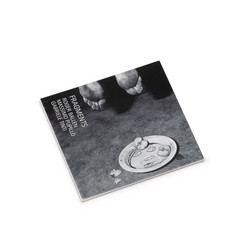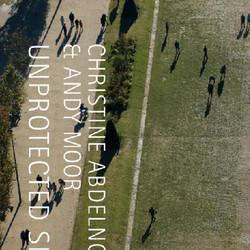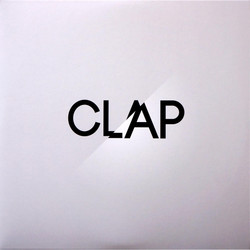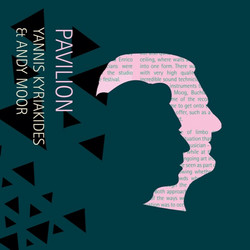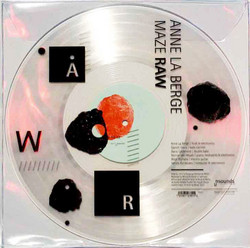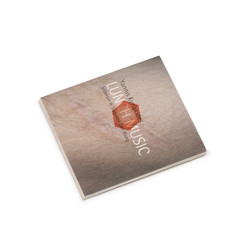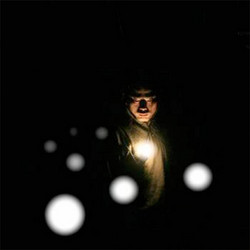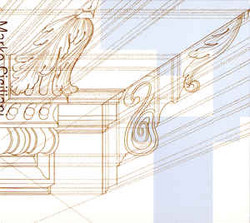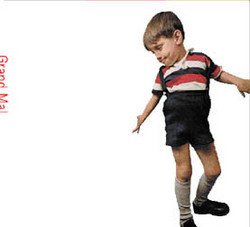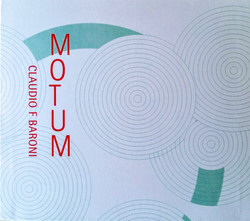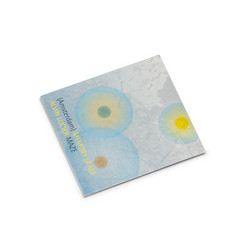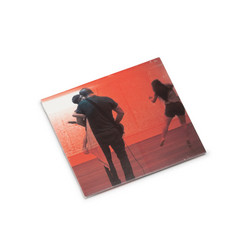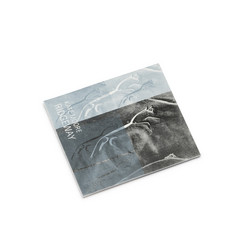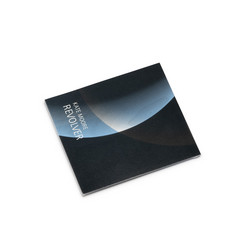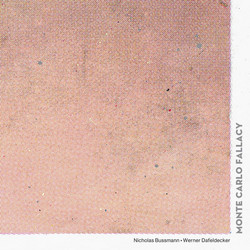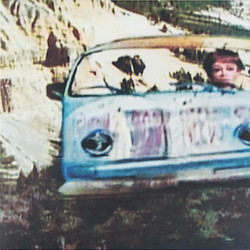We commemorate the late Phill Niblock with this release made in close collaboration with the composer just before his passing in January 2024. His life and work have had a profound influence on many contemporary composers, performers and artists, so it is a great honour to be able to present here, together with Echonance Festival, recordings of some of his very last compositions. The two works on this album, “Biliana” (2023) and “Exploratory, Rhine Version, Looking for Daniel” (2019) represent the hallmarks of his unique approach to composition where multiple, closely-tuned instruments and voices are used to create rich and complex sonic tapestries. In “Biliana”, written for performer Biliana Voutchkova, her violin phrases and vocalisations carve out a deep sonorous space full of fluctuating overtones. By emphasizing the physicality and materiality of her sound, the piece gives us the sensation of stepping back to reveal a singular portrait of the musician.
The second work on the CD, “Exploratory, Rhine Version, Looking for Daniel” was recorded by two Netherlands based ensembles, Modelo62 and Scordatura Ensemble from a live recording made at the Orgelpark, Amsterdam during the Echonance Festival in February 2023. It is a complex work comprising of 20 parts, where lines seem to emerge and disappear out of a landscape of harmonies and sonic spectra. There is also a voice hidden in this mass of instruments, just like in “Biliana”, giving both works an added human element – something that always emerges out of Phill Niblock’s seemingly dense musical constructions.
The Human Geologies of Phill Niblock’s Music
By Samuel Vriezen
Hearing Phill Niblock’s pieces you might be excused if you think them the result of something like a geological process rather than of mere human work. Stacking layers upon layers of rich sounds, they present big panoramas full of dynamic detail, throbbing, singing and moving, while the whole is transforming almost imperceptibly slowly. Music at the tempo of landscape formation but as full of life as any natural landscape. It makes listening to this work a bit like hiking, your hearing moving around, focusing on some detail, taking in the environment.
But the work is fully human. The grand sound consists of people playing their richest sonorities with forceful physicality, and the slow constructions allow us to focus on what players do. We hear in close up, and the individual tones acquire an even more intensified living reality as they interact with others, creating beating patterns and overtone interferences.
Niblock’s most common mode of working has been to record sounds by a single musician, out of which he constructs the grand panoramas – nowadays, using ProTools. These may be performed with the musician also adding a live layer. The effect is not so much that of a soloist carrying the musical drama as an amplification and multiplication of a single being, opening up virtual orchestras hidden in their musical personality. Thus “Biliana” was composed in collaboration with performer Biliana Voutchkova, who recorded a number of sounds in a studio, playing violin and vocalizing at the same time (generally at the same pitch).
Since 1998, Niblock has also been working as an orchestral composer. An ‘orchestra’ means pretty much any large ensemble of instruments that can sustain pitched sounds. In the case of “Exploratory, Rhine Version, Looking for Daniel”, the orchestra consists of musicians from Modelo62, a group based in The Hague, and the Amsterdam-based Scordatura Ensemble. The score asks for twenty parts. In live performance, you might hear the ensemble together with one or two pre-recorded versions, each instrument playing a different line in each layer. Here, three recordings have been superimposed, a mix of live and virtual interactions. Regarding the title of this piece, Niblock writes:
“Daniel was co-director of ensemble Phoenix in Basel, which the Rhine river flows through. He disappeared one night and was found along the river after a few weeks. Evidently he dropped off a bridge. No one thinks it was a deliberate suicide. He is missed.”
As I listened to these two works together, I got very interested in what you could call their implied space. What sort of landscape do they create, what sort of hike do they afford a listener? I’ll offer some dimensions that struck me, trusting that you will find your own dimensions and experiences as you listen yourself.
First, there is the physical spatial element. Thus, in “Biliana” there is a constructed space, with the definition of studio recording, creating a super-present intensity. Things sound close and tightly woven, enfolding you in the many versions of Voutchkova’s playing and singing. On the other hand, in “Exploratory”, the space is that of the hall where the ensemble is playing (Orgelpark in Amsterdam). There is distance and sounds moving around; some of that movement may be an artifact of the superimposition of the ensemble on itself. It’s very open, as if you could walk between the instruments.
Then there’s harmonic space. “Exploratory”’s score (created by Guy De Bièvre following Niblock’s instructions) allows me to analyse what’s going on. Twenty instrumental lines of pitches with microtonal inflections are indicated with no octave specified, to be performed in the instrument’s most resonant register. The first half of the piece concentrates on pitches around F and F sharp, and later a D sharp (with microtonal environs) is added. But what I hear is not reducible to dry pitch accounting. Rather, I hear strange throbbing polyphonies, clusters that are hard to define like a harmonic mist, with occasionally more stable tones emerging as instruments approach each other’s intonations – only to drift apart again. The gradual emergence of the D sharp (and surrounding microtones) creates a suggestion of a minor tonality, slowly changing the piece’s countenance, fixing it more in harmony, maybe approaching the atmosphere of a very slow, stretched orchestral sonority from some dark romantic symphony.
“Biliana” has a much more stable, ‘consonant’ sound base, strongly determined by the violin’s open strings. In the opening, I’m struck by the play of overtones that grace the drone with rich melodic coronas. A clear core harmony carries the piece while more pitch components appear, shifting the attention between the overtones and melodies suggested by the base pitches themselves. Sometimes, a major third sounds very present, at other times, a minor third asserts itself, creating the appearance of a modulation – except that you can’t always quite tell when the change happens. Rather, tonalities slide across one another. Major and minor also appear at the same time, and then the sense is of multiple elusive melodic modes emanating from the same source, a rich superposition of living realities.
And then there’s the human element. “Biliana” creates a vast presence from the many perspectives on a single performer, transforming her into something larger than life, whereas “Exploratory” sounds like a group of humans, individuals all contributing to the sound with none standing out, a collective timbre of inner differences. Both pieces feature voice – Voutchkova’s, and the voice of Scordatura’s Alfrun Schmid in “Exploratory”. Normally, a voice in music tends to become a central focus by default; remarkably, here, the voices exist in equivalence with the rest of the sound. As your attention drifts along the textures of “Exploratory”, you might be surprised by a trace of a voice in the sonic mesh; whereas Voutchkova’s voice melds into her playing so much that it sounds like spectral choirs hiding within the grand, glorious, almost Brucknerian texture.
Such are the human geologies of Niblock’s music. Enjoy the hike.
.

